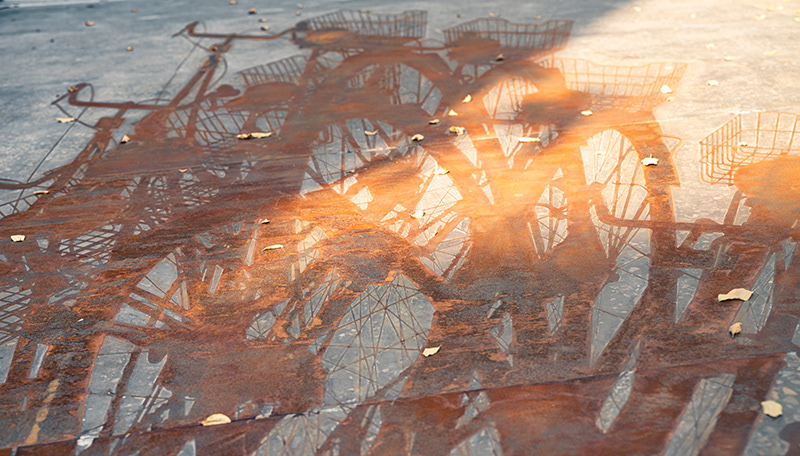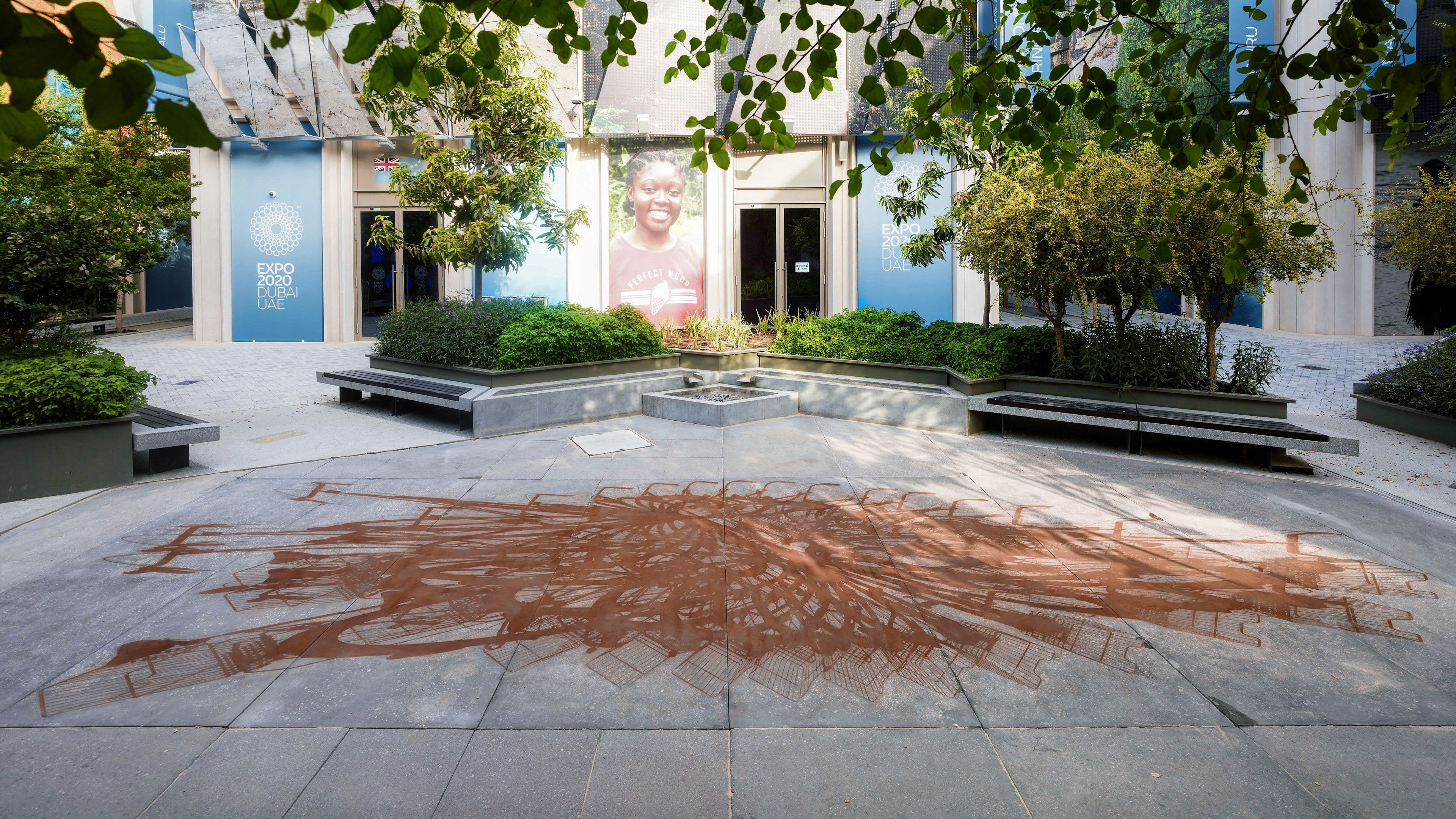One Day on Two Orbits, 2021
Weathering steel and concrete; 900 x 300 cm. Photo: TiKL, 2021
One Day on Two Orbits, 2021
The flat sculpture embedded in the ground renders homage to a man whose skepticism has led to an adjustment of the Ptolemy Amalgast, the more than 1200 years of unquestioned understanding that the Earth would be the center of the solar system. Although Alhazen kept the geocentric hypothesis he eliminated the equant theory (assuming that the moon and the sun would be orbiting the Earth on similar tracks) and introduced the idea that the sun and the moon revolve in geometrically and temporally (speed) different orbits. This discovery finally led to a better understanding of both space and time on Earth and could explain the existence of two calendar systems one of which relates to the solar orbit – the so-called occidental calendar – and the one – the oriental calendar – to the lunar orbit. In this regard, One Day on Two Orbits is meant to be a memorial for Alhazen’s discovery that not only relocated the Earth in the solar system; it also harmonized different cultures of time bringing together the Orient and the Occident.
Interview Nadia Kaabi-Linke with Gert Haupt and Pat Binder, Universes in Universe
Nadia Kaabi-Linke. Expo 2020 Dubai Public Art Programme (universes.art)

One Day on Two Orbits (Roof Top View). Photo: Roman Mensing, 2021

One Day on Two Orbits (Detail). Photo: TiKL, 2021

One Day on Two Orbits (Close up). Photo: TiKL, 2021

One Day on Two Orbits (Detail). Photo: TiKL, 2021
